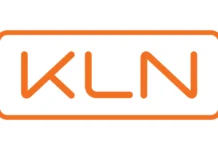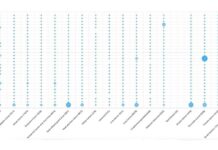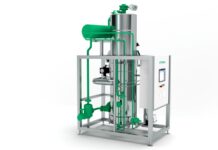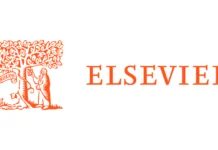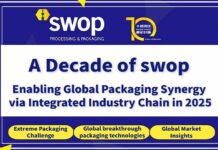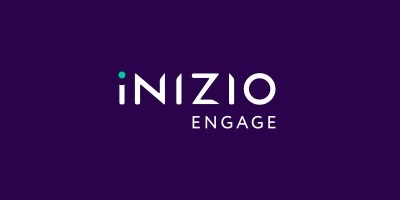Motivated employees are critical for businesses. Motivation drives effective performance, and without sufficiently motivated employees (no matter how skilled), the chances of reaching organizational goals are reduced. For the pharmaceutical industry, as a high-stakes environment dealing with human health and well-being, motivation is fundamental. Highly skilled and motivated personnel are needed to complete often challenging and complex research and development work, as well as embrace change and adapt to new opportunities, driving innovation and progress. Technological advancements and scientific discoveries usually require high employee commitment and motivation.
Forms of motivation
Employee motivation is complex. It is influenced by both external factors (forming extrinsic motivation), such as rewards and incentives, and internal factors (intrinsic motivation), such as personal values, interests and a sense of purpose. Recognizing this complexity is key to effectively motivating and engaging employees.
Guided by theory and insights from psychology, Forty1, part of Inizio Engage, defines and measures various forms of intrinsic and extrinsic motivation in the workplace:
- Intrinsic motivation
- Enjoyment motivation, where people find their work inherently enjoyable and interesting.
- Meaning motivation, where people feel that their work has purpose or value that they endorse. Work does not have to always be enjoyable or interesting, but employees feel it is important.
- Extrinsic motivation
- Identity motivation, where professional roles are important to people’s self-worth and how they wish to be perceived.
- Social motivation, where opportunities to gain approval or avoid disapproval (both within and outside of work) motivate people.
- Financial motivation, where people feel motivated by financial rewards, like pay and benefits.
Data collected by Forty1 from a comprehensive sample of 2,646 US and UK-based employees working for large organizations in their current post for at least three years revealed a positive relationship between employee motivation levels and employee outcomes. When employees reported high levels of motivation, they were also happier and more committed, with lower levels of stress and fewer thoughts about leaving their organization [1]. With high motivation, companies can expect increased employee commitment and contentment, with a lower risk of stress and staff turnover.
The research demonstrates that both intrinsic (like finding meaning in one’s work) and extrinsic motivation (such as pay or social recognition) benefit businesses. However, strategies to target and drive motivation should be designed in a sensitive and multifaceted way, as data across factors such as age and tenure highlight the potential for differences in what motivates employees across the workforce.
Factors influencing the main type of motivation for employees
Popular belief is that for the majority of employees, their main motivation is in financial rewards or the impact of their work. However, the research data shows that identity motivation — describing people’s needs to support their self-esteem and self-respect through their work and professional roles — is the strongest. This form of motivation was highly influential in driving employees to put effort into their work for nearly half of those surveyed (46%). This was followed by meaning, social, enjoyment and financial motivation (which were rated as highly influential for 31%, 30%, 29% and 28% of employees surveyed, respectively) [1].
One might expect that many healthcare employees are driven by intrinsic motivation due to the perceived value and impact of their work on improving human health and well-being. The complex nature of medical research and patient care is also likely to be intellectually stimulating for many employees. However, what motivates employees might differ across different types of healthcare and pharma businesses as well as roles. For example, motivation may be different for those in larger organizations or in “back-office” roles who are further removed from seeing the impact of their work on patient-related outcomes.
This is why businesses should focus their efforts wisely when aiming to shape motivation within an organization and consider a good balance of intrinsic and extrinsic motivation. This can be done through a mix of understanding core human needs driving motivation and using a set of appropriate tools and processes to support these needs. It starts with measuring motivation within the business through data gathered in research, including anonymous employee surveys, focus groups and conversations with C-suite members aligned to organizational goals. The more in-depth and grounded in science this research is, the better the outcomes and toolset to increase motivation. This is why expert insights should guide any investments in building and shaping motivation.
Motivation foundations and levers
Self-determination theory focuses on the degree to which our behaviors are self-motivated and self-determined. The theory proposes that people are inherently motivated when three innate psychological needs are fulfilled:
-
- Autonomy: The need to feel in control of actions and behaviors. This means feeling free to make choices and pursue personal goals rather than feeling pressured or controlled by external forces.
- Mastery: The need to feel effective and capable. This involves feeling a sense of competence and accomplishment and being able to meet challenges successfully.
- Relatedness: The need to feel connected to and cared for by others, a sense of belonging and social support, and meaningful relationships with others.
Organizations can acknowledge these three needs through structures, processes and rules within the workplace and build balanced employee motivation using five distinct levers. These mechanisms, within reach of every organization, can stimulate and grow motivation:
- Internal communications: All internal messaging and campaign activity across employee, manager and leadership communications.
- Manager interactions: All conversations, structured and spontaneous, including feedback, reviews and career planning.
- Working experiences: Day-to-day employee and organization interactions, including policies, HR experiences and working conditions.
- Learning and development: Ongoing opportunities for personal and career development.
- Purpose and values: The organization’s stated values and how they are demonstrated by senior leadership.
Research suggests that when these levers are well used by the organization and seen as effective by the employees, levels of all forms of motivation increase. Strong and positive perceptions of the motivation levers were also related to improvements in key business outcomes [1].
Current and future trends shaping employee motivation
In the past few years, hybrid working models that blend remote and in-office work have become more common, but they present a challenge for organizations attempting to improve motivational balance for their employees. Maintaining team cohesion, ensuring equitable opportunities and managing performance in hybrid settings must be addressed. Companies are actively trying to find the right balance between ensuring employee well-being and achieving organizational purposes.
Looking ahead, discussions around employee motivation have to consider the impact of generative artificial intelligence (AI). The highly regulatory nature of pharmaceutical organizations can hinder the adoption of AI implementation, but the effect it has and will continue to have on drug development, clinical trial design, production and sales and marketing cannot be overstated. This will impact employee roles, and businesses must ensure that their personnel are motivated to continue creating value and achieving a competitive advantage.
Data-driven, scientific approaches guided by experts will successfully help companies align their employee strategies and investment tactics to align with employee motivation. By understanding employee motivation and educating and equipping skilled employee experience engagement teams with the data, they can create tactical steps — campaigns, events and everyday working environments — to capture the imagination of the pharmaceutical industry workforce and create lasting, positive change.
Reference
1. https://www.forty1.com/bom/






